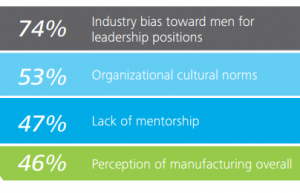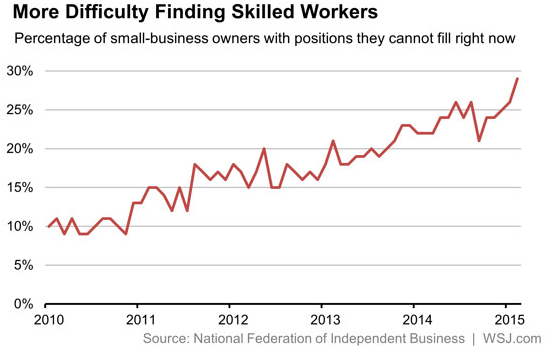Mind the Gender Gap
It’s no secret that the manufacturing industry faces a serious recruiting problems in recent years – with a predicted shortfall of 2 million workers by 2025 and an ever-increasing skills gap.
A new study from Deloitte and The Manufacturing Institute takes a closer look at the industry’s gender gap. Only 26 percent of the U.S. manufacturing workforce is female. Meanwhile, nationally, women make up nearly 50 percent of the workforce. The study found that by overlooking or under-recruiting women into the field, manufacturers are missing an important pool of talent that could help them close the skills gap.
- Two-thirds of those surveyed said they would stay in manufacturing if they were to start their careers today and would recommend them to their daughters or female relatives.
- Yet, 65 percent said their companies do not have an active recruitment program for potential female employees and 73 percent said women are underrepresented among the companies’ leadership ranks.

Compared to other sectors, the above reasons contribute to the manufacturing gender gap, according to the study.
Study: Parents still don’t understand STEM jobs
Women aren’t the only group that manufacturers need to continue targeting. A new survey from the Alcoa Foundation and SkillsUSA found 87 percent of parents believe STEM education is important for their children, yet there remains a clear disconnect between STEM education and its related careers, particularly in manufacturing.
- 42 percent of respondents thought the average wage for manufacturing employees was $15 per hour or less and/or don’t offer medical benefits. Statistics from the U.S. Department of Commerce show that the average salary for entry-level manufacturing engineers is $60,000 and 90 percent of manufacturing workers have health insurance.
- Two-thirds believed that manufacturing and trade jobs don’t provide opportunities for advancement and 22 percent said that manufacturing jobs do not offer innovative, intellectually stimulating work.
Preparing the next generation of manufacturers
The Brookings Institute has also weighed in on the state of the manufacturing industry. During a recent forum focusing on preparing the next generation of manufacturers through community colleges, panelists called for new more technical training in new manufacturing technologies.
Be sure to check out three excerpted videos of the daylong discussion, as well as two blog posts: “Preparing the Next Generation of Manufacturers through Community Colleges†and “New Skills Needed for New Manufacturing Technologyâ€.
Andrea Zimmermann, State Policy Associate


 Industry-related research is leading the news this month with new reports from the manufacturing and technology sectors.
Industry-related research is leading the news this month with new reports from the manufacturing and technology sectors.